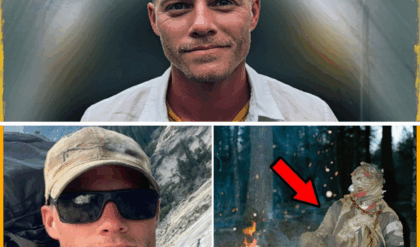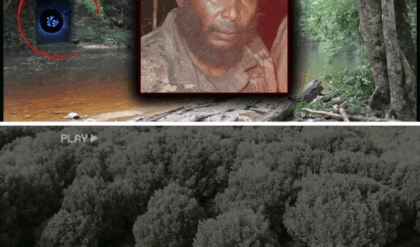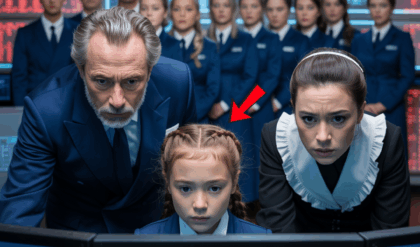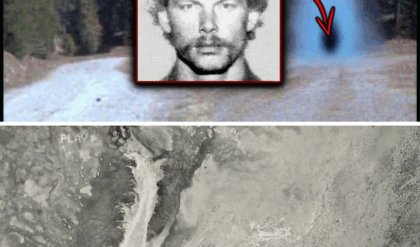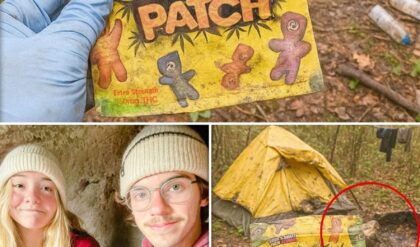
In the heart of Mexico’s rugged Sierra Madre mountains, a four-year-old mystery has been stirred back to life by a sound so chilling it has left hardened park rangers speechless. The story of Alejandro, Sofía, Miguel Ángel, and Isabela—four bright, ambitious 17-year-olds from the quiet town of San Rafael, Chihuahua—has haunted the community since they vanished without a trace in the summer of 2019. Their disappearance was a collective wound that never healed, a silent ache that lingered in the pine-scented air of their small village. But now, it seems the mountains are ready to give up their secrets.
To understand the full weight of this new, terrifying development, we must go back to that fateful summer. San Rafael is the kind of town where everyone knows everyone. A place where children grow up together, and their dreams are as big as the mountains that surround them. The four friends were no exception. Alejandro Morales, the athletic and charismatic natural leader, was the son of a silver miner and a small-town grocer. He dreamed of studying engineering but longed for adventures that would take him far beyond the limits of San Rafael. Sofía Hernández, the intellectual of the group, was a brilliant student who lived with her wise grandmother, a retired teacher who instilled in her a deep love for knowledge. She planned to study biology and return to the Sierra Madre to study its unique ecosystem. Miguel Ángel Torres, the group’s ever-present joker, was the son of the town mechanic, a man whose skillful hands he had inherited. And finally, Isabela Ramírez, the youngest but most determined of the friends, was the daughter of the town veterinarian. She had an almost mystical connection to nature and animals.
These four had been inseparable since childhood, forging their own adventures in a town with limited entertainment options. Their graduation expedition, a planned three-day hike into an uncharted canyon system in the mountains, was meant to be their final grand adventure together—a celebration before life took them on separate paths. They had planned it meticulously, poring over topographical maps, gathering gear, and consulting with their families, who, with a mix of pride and apprehension, supported their ambitions. Roberto Morales, Alejandro’s father, insisted they take a GPS and a satellite phone. Carmen, his mother, packed enough food to feed an army. Sofía’s grandmother, Doña Esperanza, gave each of them a small protective amulet.
The air in San Rafael was thick with a palpable sense of excitement in the days leading up to their departure. Their last year of high school was ending, and a world of possibility lay ahead. On the morning of June 3, 2019, they met in the town’s main square, their backpacks heavy but their spirits light. Alex, Sofia, Torres, and Isa were all ready to make history. They set off on the Golden Eagle Trail, a familiar path that would take them to the point where they’d branch off into the uncharted territory they had studied so intensely.
The first few hours were easy, a pleasant walk through a sun-dappled pine forest. The air was filled with the scent of resin and damp earth, and the sounds of birdsong and their own lighthearted chatter filled the silent woods. At 8 a.m., they reached “The Three Sisters,” a distinctive rock formation that marked their planned turn-off point. From there, they left the familiar trail and began their journey into the unknown.
The terrain quickly grew more challenging, with steep slopes and dense vegetation. They had to use a small machete to clear a path and rely on their compass and GPS to navigate. Despite the difficulty, their spirits remained high. Every new vista, every hidden waterfall they found, reinforced their conviction that this was the right thing to do. Their first radio check-in at 11 a.m. yielded nothing but static, a minor concern they attributed to the “canyon effect.” They believed they would regain the signal once they reached a higher altitude. At noon, the scheduled check-in time, the same thing happened. A slight unease began to creep in, but Alex, ever the leader, reminded them of their backup plan. They had until 6 p.m. to make contact. By then, they’d be at the main canyon, which was at a higher altitude, so they’d surely be able to communicate.
At 2 p.m., they reached the edge of the first canyon. The view that lay before them was breathtaking, a dramatic expanse of reddish-gold rock walls and lush green vegetation. A small stream snaked along the bottom, creating a peaceful, resonant sound. It was everything they had hoped for. After a quick break, they attempted one more radio check from a higher point, but again, nothing. The worry was now palpable. The descent into the canyon was even more treacherous than they had anticipated. They had to improvise a rappel system with their emergency ropes, a process that took nearly two hours. By the time they reached the bottom, the sun was beginning to set. As they worked to set up camp, Alex made several attempts to contact base, but the radio remained silent. At 6 p.m., the scheduled final check-in, they gathered around the radio with a quiet tension in the air. “Eagle Base, this is Explorer One, do you read me? Over,” Alex’s voice trembled slightly as he spoke into the microphone. Only static answered him.
That was the last time anyone heard from them.
When the teenagers failed to return home on Sunday, June 4, a silent panic began to spread through the town. While it wasn’t unusual for a hike to go a bit longer than planned, the total lack of communication was unsettling. Roberto Morales spent the entire day glued to the radio, his wife pacing nervously in the kitchen. Doña Esperanza lit candles and whispered prayers. The town’s mayor, Don Gustavo Mendoza, knew something was wrong. On Monday morning, the four families officially reported their children missing, and a full-scale rescue operation was launched. Over the next three weeks, a massive search effort involving forest rangers, police, paramedics, and volunteers combed every inch of the mountainous terrain. They found clear signs of the teenagers’ presence—cut branches, footprints, and even a discarded water bottle—but no sign of the teens themselves. It was as if they had simply vanished into thin air. After exploring over 100 square kilometers, the search was officially called off on June 28, 2019. The four friends had become ghosts, a constant, painful presence in the town’s collective memory.
The years that followed were a testament to the community’s grief. Roberto Morales took an indefinite leave from the mine, turning his son’s room into a command center covered in maps and photos, a radio humming with static in the corner. His wife, Carmen, aged a decade in the first year, her eyes constantly drawn to the mountains. The town, once so vibrant, was now marked by a deep, collective sadness. The mountains, once a source of beauty and sustenance, were now viewed with a mixture of reverence and fear. The case was considered closed, a tragic mystery with no answers.
Until now.
On a recent clear afternoon, two park rangers—one a veteran named Marco and the other, a young, new recruit named Diego—were patrolling a remote section of the Sierra Madre, miles from any marked trail. They were checking on an old geological survey site near the same canyon where the four friends disappeared. Marco was a man of few words, a hardened veteran of the wilderness. Diego, on the other hand, was full of youthful curiosity. As they navigated a particularly rugged section of the terrain, they stopped to rest. The only sounds were the whisper of the wind and the distant cry of an eagle.
Suddenly, a new sound cut through the silence. It was a faint, high-pitched noise, almost like a whistle, but with a strange, unnatural quality to it. It rose and fell in a pattern, a kind of mournful, melodic cry that seemed to come from the very ground beneath them. Marco, a man who had heard every sound the mountains could produce, from the howl of a coyote to the distant rumble of a rockslide, stopped dead in his tracks. He turned to Diego, a look of pure shock on his face.
“What was that?” Diego whispered, his voice trembling.
Marco shook his head, unable to form a response. The sound continued for several more minutes before fading into silence. As they stood there, frozen in place, they realized the sound wasn’t just a random noise; it was the sound of a human voice. But what kind of voice? The pitch was too high for a man, too low for a child. It was a voice filled with an unearthly sadness. The two rangers, a mix of seasoned veteran and wide-eyed rookie, were now gripped by a profound sense of dread.
The discovery sent a jolt of electricity through the community of San Rafael. The families of the missing teens, who had endured four years of silent pain, were suddenly thrown back into the public spotlight. The local authorities, spurred by the rangers’ testimony, have reopened the case. Forensic teams are now investigating the canyon, searching for any clues, any evidence that could explain the strange, haunting sound.
While the investigation is in its early stages, one thing is certain: the mountains are no longer silent. The chilling sound that echoed through the Sierra Madre promises to unravel a long-held mystery. It has been four years since Alejandro, Sofía, Miguel Ángel, and Isabela vanished, and their story remains one of the most baffling disappearances in recent memory. The question now is: what truth will this new discovery reveal? What—or who—is in those mountains, and what secrets are they protecting? As the world watches with bated breath, the families of San Rafael hold on to the slimmest sliver of hope that this time, the mountain’s voice will not just be an echo, but an answer.
